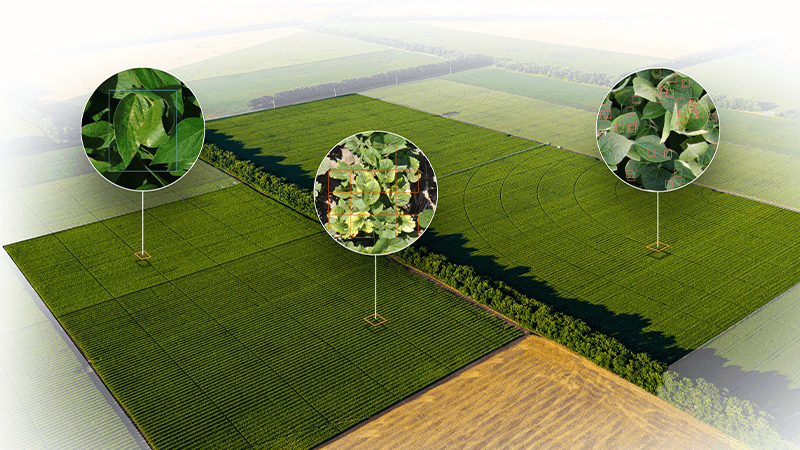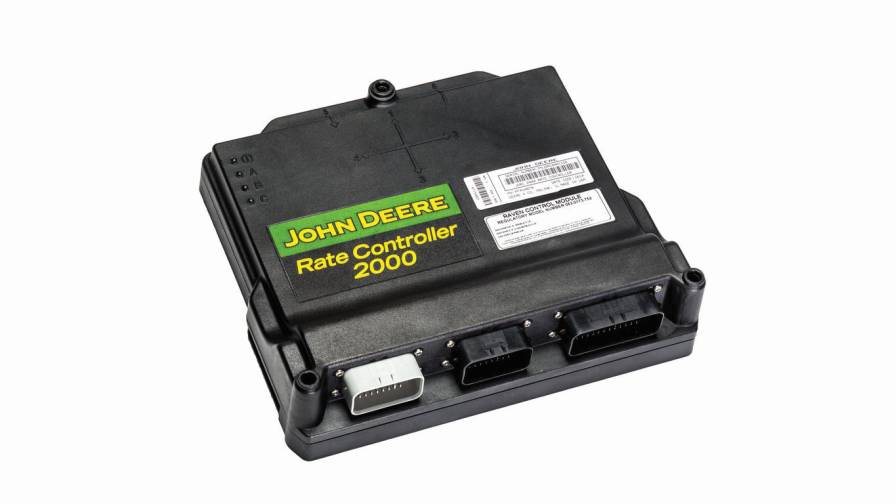Rate Controllers: Little Boxes, Big Impacts
One precision ag manufacturer shared a key goal for rate control design: “As spraying continues to become more complex, it is our job to make it as easy as possible. Otherwise, you aren’t going to realize the benefits and full potential these technologies offer,” says Ryan Molitor, Raven’s Director of Customer Experience.
The task can be daunting, especially in light of the many demands placed on applicators these days. For instance, tracking rate data will be huge in 2018, notes Chad Swindoll, Precision Technology Agronomist with Ag Leader. Some of the leading dicamba products labeled for in-crop use will be Restricted Use. That means automated records of each application are a must, he says. And, USDA guidelines specify that applicators must have the data logged within 14 days of applying the restricted use product (RUP) and maintain those records for two years.
Controllers need to help with the challenge of weed resistance, Swindoll believes. A key focus here: Helping ensure pre- or postemergent products are not under-applied.
“Anyone driving down the road can see this problem on field edges where sprayers are under-applying as the rate controller struggles to ‘catch up’ to the ground speed of the machine,” he says. “Conventional rate controllers may ‘hunt’ for the rate in some conditions, resulting in an oscillating spray pattern of under and over-application.”
He adds that DirectCommand ensures that application rates stay on target by seamlessly transitioning from either flow-based control or pressure feedback. Rather than relying on one sensor for control, DirectCommand uses two. In addition, DirectCommand continually monitors the relationship between expected flow and measured flow to detect failures in the spray system such as broken hoses, plugged filters, and failing sensors.
The continual move to larger and larger booms creates another challenge for controllers — to be able to make accurate adjustments for variable rate applications, says Wade Stewart, Solutions Manager, Ag Division, with Trimble. Large changes in rate create a delay in material hitting the field the larger the boom gets.
Another big issue in this space is the need to have a solution that covers all of the different applications farmers are starting to use, says Doug Felter, Product Marketing Manager with John Deere. He would add that Deere rate controllers offer highly accurate solutions for farmers that want to apply starter fertilizer while planting — all the way to applying multiple dry fertilizers and NH3 while strip-tilling. The capabilities expand further as growers’ needs change.
Real Estate in the Cab
Some manufacturers note that as applicators do more tasks, there’s the concern the controls needed to handle them — terminals, cable connections — will clutter up the cab.
Micro-Trak’s new ISO module can simply plug onto the network from back on the implement being controlled. It communicates with the driver’s terminal screen from outside the cab.
The module has gotten a very good response as well because it brings Micro-Trak’s expertise in rate monitoring and control to customers, says Jay Beedy, Marketing Manager. “It brings all of our algorithms, math, processes, and capabilities to any Deere, Case, AGCO, or aftermarket virtual terminal that’s ISO compatible,” he says. “Drivers don’t have to just adjust to whatever controller comes with an applicator. It may be a convenient piece, but might not have all the capabilities of a company like us that’s focused strictly on product control.”
The new module can handle flow-based or pressure-based application and do single or dual product control.
Raven has added features to its Rate Control Module (RCM), including the ability to interface with scale technology. Here, too, “the nice thing about having that is it eliminates a need for an additional display to monitor the scales,” says Molitor.
RCM now has three different levels of capabilities, giving users the ability to purchase and scale up as needed. With the latest round of enhancements, the module now controls up to five products, including variable rate capabilities. And it will work on liquid, granular, NH3 and air cart capabilities.
In general, the industry is seeing control technology move from a central location to points closer to the application. For instance, a single rate controller on a planter is giving way to individual drives, notes Trimble’s Stewart. A single rate controller on a sprayer is giving way to individual nozzle control. The ability to select the correct nozzle for the rate and speed has also seen the need for multiple nozzle selection during in field operation.
Trimble technology now allows operators to install up to four nozzles in a single location. The system will automatically select the proper nozzle or combination of nozzles for the application rate or vehicle speed, to ensure the proper rate and droplet size for optimal coverage and reduced drift.
Topcon’s Apollo line of sprayer controllers does control individual nozzles, points out Clayton Post, Product Marketing Specialist. “No other precision provider can currently do this,” he says.
The units provide 100+ section control as well as individual nozzle control utilizing HYPRO ProStop-E valves, 8 product variable-rate control, and an ISO-UT interface.
New Offerings
What’s new heading into 2018? AGCO did a major redesign of its AgControl rate and section controller. It’s now featured in the new RoGator C Series to control application with the new LiquidLogic spray system which is available with fully integrated AgControl and Auto-Guide systems — or with Raven Viper 4+ technology with SmarTrax. These units offer section control (standard using the AgControl rate controller) for either 35 sections with 10- or 15-inch spacing or 36 sections with 20-inch spacing.
AGCO’s Cody Light, Strategic Marketing Manager, NA Fuse, thinks customers will be excited about AgControl. Not only is it simple, intuitive, ISOBUS-compliant and fully integrated into AGCO’s machines, it is extremely accurate, he says. “Where rate and section controllers really show their strength is after a field is completed and you see how much you used compared to what you should have used,” he describes. “When those numbers are extremely close, that gives users a great feeling that they did the job the best that they could.”
Raven is introducing a number of new features on its Hawkeye Nozzle Control System. The changes will give operators more visibility to how the system is performing in real time, so they know how efficiently it is performing. Plus, the system has additional diagnostic capabilities, and the way Raven can update software in the NCVs on the unit has been simplified.
Deere’s Felter shared a number of new developments in his company’s controller products. The ExactApply Nozzle Control System is available for John Deere 4 Series Sprayers. It combines Pulse Width Modulation (PWM) technology at 30Hz with the ability to switch between a pair of nozzles from inside the cab. This helps to minimize or eliminate pressure swings even as speed and rates change, minimizing the risk of products moving off target.
The 4 Series Sprayers also now come standard with the Gen 4 CommandCenter Display. This interface makes calibration and setup tasks easier, as well as improves the amount and quality of information, including rates, available to the operator during application tasks, says Felter.
Hagie sprayers, available through John Deere dealers as the result of the joint venture between John Deere and Hagie, now offer Deere precision ag technology factory installed. With a GreenStar 3 2630 display, StarFire 6000 receiver, and Rate Controller 2000, the operator has access to guidance, rate, and section control, and documentation functions.
In spring 2018, Deere will be adding an additional application type for manure to the Rate Controller 2000. This will allow users on Drag Line applicators to document applied product.
Trimble acquired Müller-Elektronics, a long-time leader in ISOBUS technology, in July of this year. In November, Trimble released the Trimble ISOBUS Solution, building on its history of providing brand agnostic steering by bringing advanced technology to the implement which can work with any ISOBUS compatible display. It is available for slurry, dry spreader, and liquid applications such as a fertilizer bar, sprayer, or anhydrous application. The portfolio also includes an ISOBUS-compatible weather station that can be added to many existing ISOBUS installations.
Over the past 12 months AgJunction has been working on some exciting new offerings which will be launched under the Outback brand in the first quarter of 2018. The new products will provide technologies to improve the customer experience and deliver more value and ROI, says Josh Gattis, Director, Application Control.






